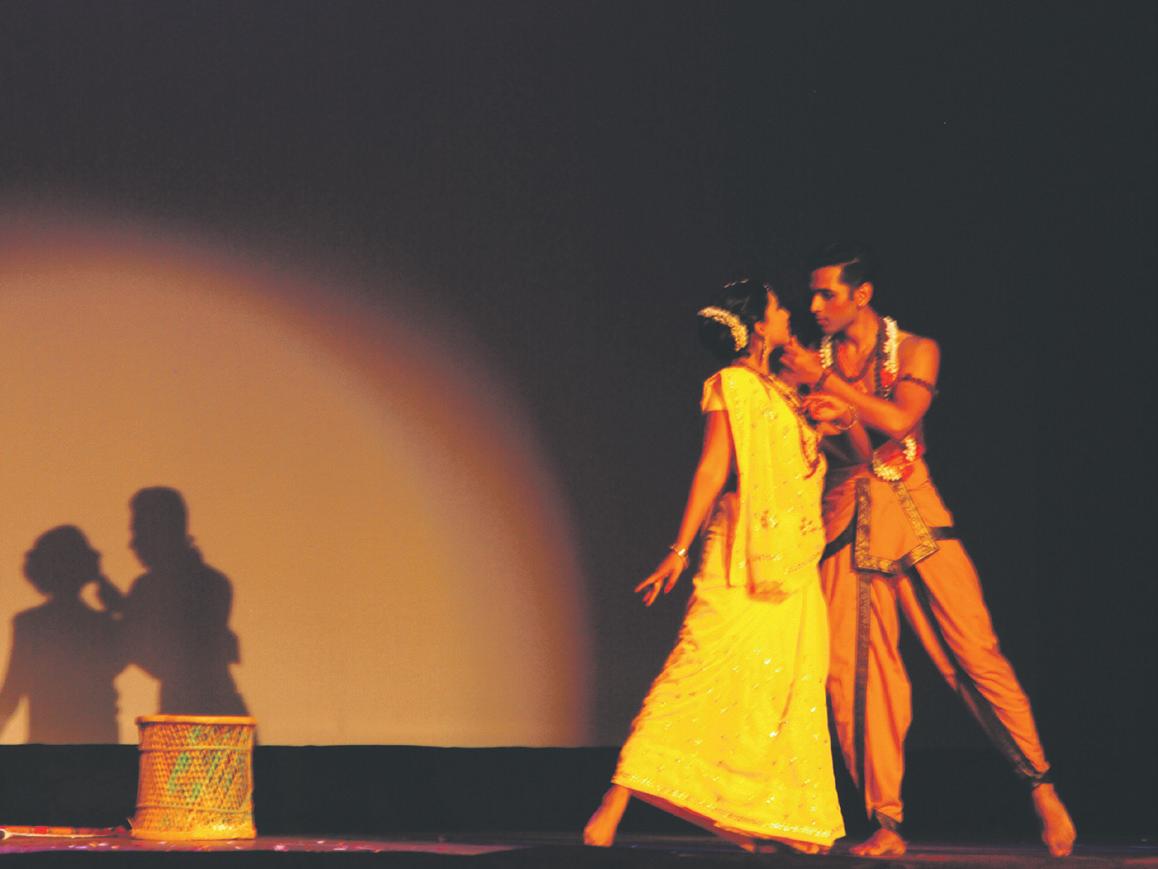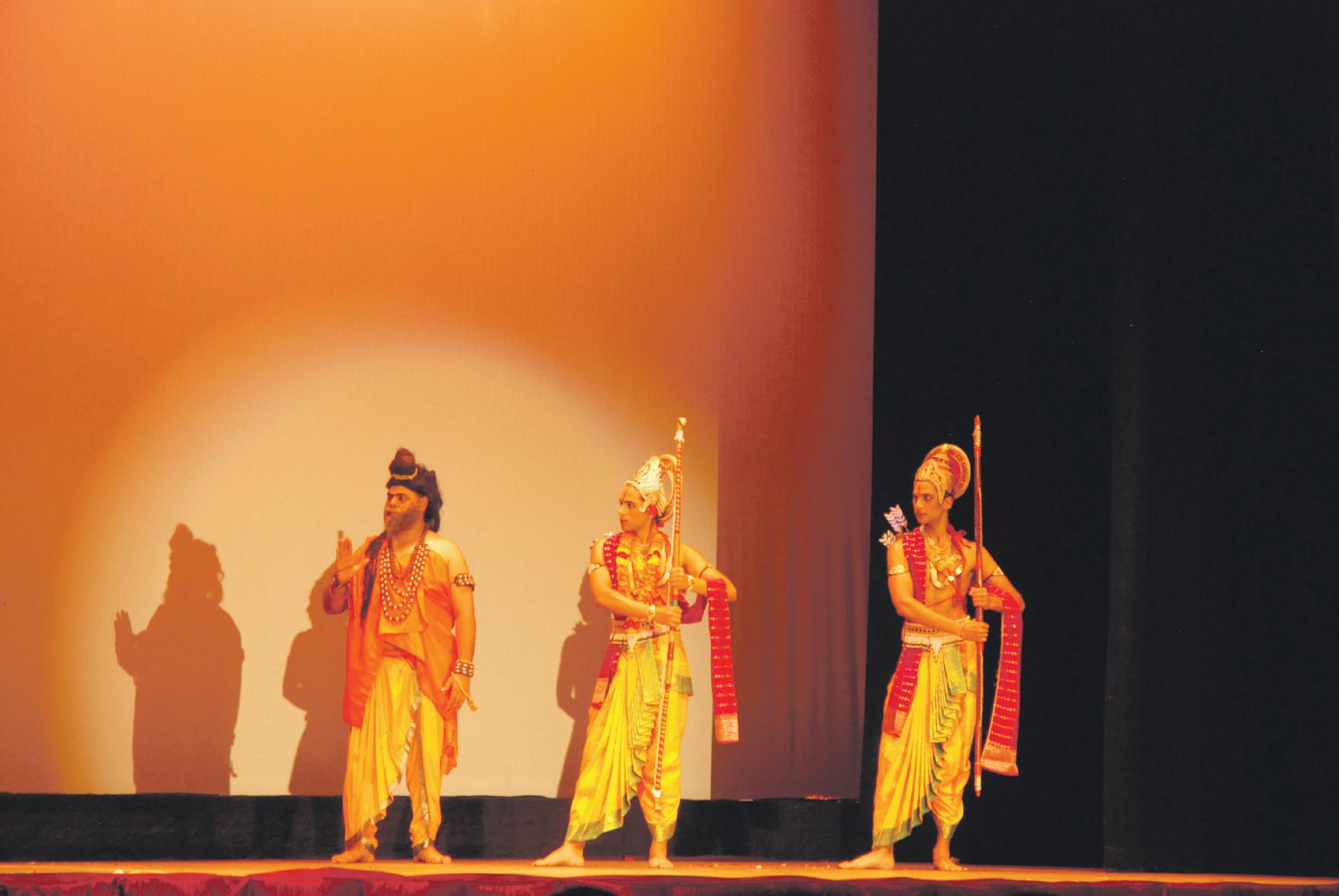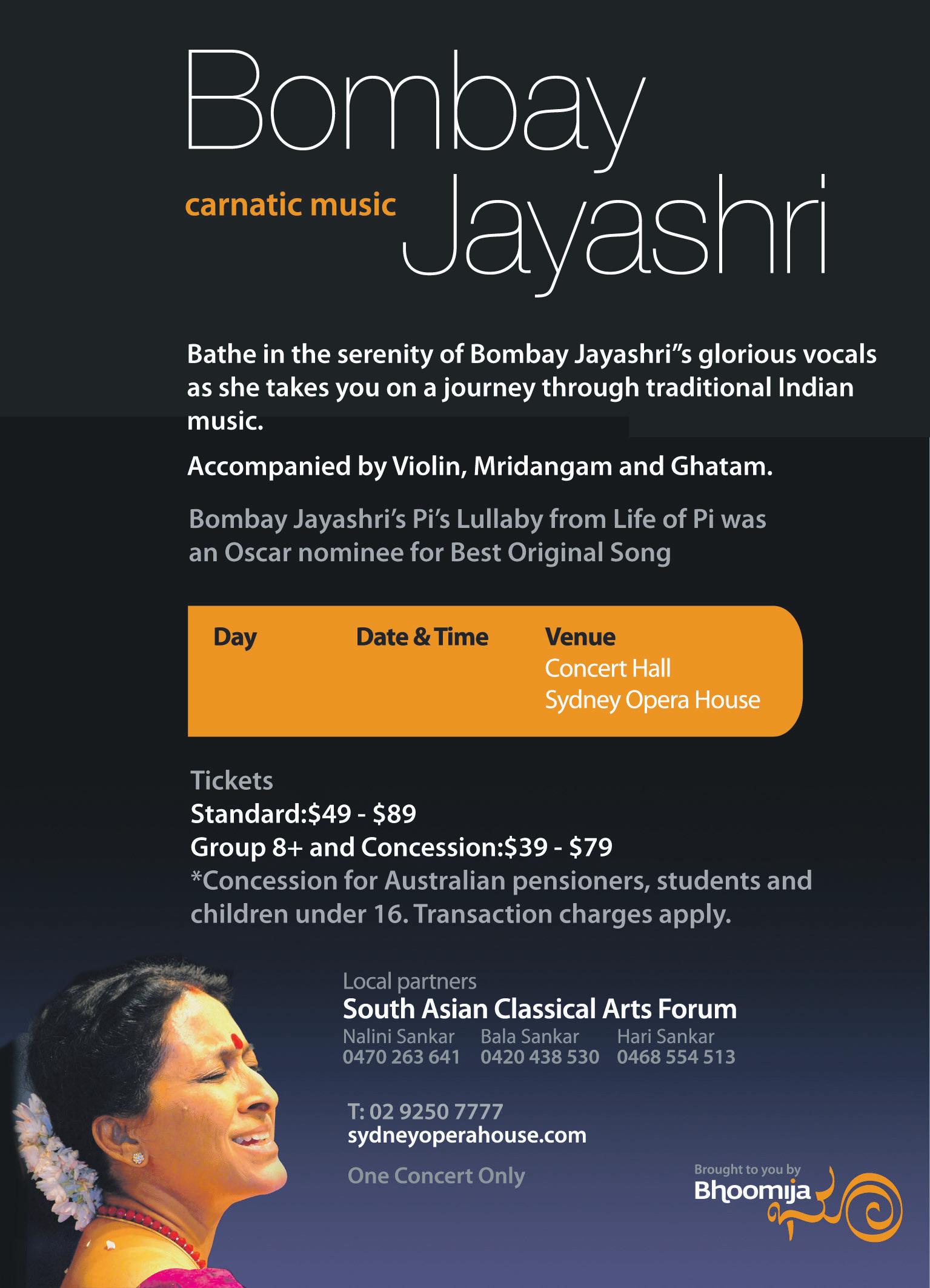
3 minute read
The passing of the mantle
from 2013-04 Sydney (1)
by Indian Link
as she left behind her jewels for her husband to find, and in her steadfast refusal to give in as hounded her in
Amongst the other characters, Poornima won the most applause as the scheming hunch-back Manthara and later as the devout, self-admonishing Shabri. Her dad Raghavan Nair kept to his real-life ‘godfather’ role as King Dasharath; as expected, he depicted superbly the grandeur of his position, the despair of a humiliated husband, and the grief and pain of a father whose sons bravely took on the exile hurled
Krish Sharma as Ravana, Anuj Nair as Parshuram and Meghnath, and Suhasini Sumithra as Kaikeyi did justice to their roles too.
The costumes were fantastic, bringing alive the splendour of the royal court brilliantly. But perhaps more attention could have been paid to the costumes of the animal characters such as Jatayu and the golden deer that enamoured Sita. Ravana’s head gear looked like a primary school kid’s craft project from last week, but it’s ok, he’s just the baddie! And as for the vanar , they looked somewhat bizarre, definitely non-simian, with those odd mouth pieces. Luckily for them, they got that sideways monkey gait down pat, thanks no doubt to Raghavan and Poornima’s excellent skills in
By RAJNI ANAND LUTHRA
The Indian Dance Centre’s recent staging of the great Hindu epic Ramayana was interesting in many ways, but mostly because it showed the mantle passing on to the next generation.

Founded by Raghavan Nair in 1987, the Centre is one of Sydney’s oldest Indian dance schools. With productions in many genres including classical and folk, the Centre regaled the audiences through the years under the directorship of Raghavan Nair until he handed over to his talented daughter Poornima Sharma a few years ago. Poornima, who had played leading roles in all her father’s productions along with her brother Anuj, soon established her own credentials not only as a dancer and choreographer but also as an able and innovative leader. Anuj continued the family tradition too, while simultaneously carving a successful career for himself as a singer in mainstream music.

This year, Poornima’s young sons Deepak and Ravi played the leads in this long-standing family show for the first time.
The mantle passes on, for sure.
(Even the MC at this year’s staging, Preeti Thadani, played the female lead in an early version of this show).
The Ramayana is essentially a set of guidelines for dharma, or ‘duty’ and ‘propriety’. It describes the nature of ideal relationships, such as between husbands and wives, parents and children, siblings, even rulers and the ruled, and as such, lays down human values as espoused by Hinduism. While the original was written by Valmiki in Sanskrit, the more popular version is handed down to us in the Avadhi language. Ramcharitmanas by Tulsidas has made the Ramayana more accessible to the general populace. The Indian Dance Centre’s version uses the original chaupai metre (four-line quatrains) that Tulsidas used for much of the work. Many devout Hindus in the audience sang along to the verses that they have chanted all their lives, and it did not seem to matter to them at all that the sound was somewhat wanting on the night.
Deepak Sharma as Rama was most impressive: no doubt he sent many hearts aflutter in the audience with his brilliant act – not to mention those toned biceps. You could say he was born to play Rama in this family production, but he more than lived up to his expectations. And who wasn’t impressed with that stylised slow-motion walk? This young man is star material for sure.
To be fair, his brother Ravi Sharma played the role of Lakshmana to a T. Suitably reticent, he let the spotlight shine on his brother, just like the real Lakshmana would have. But in the fight scenes with Meghnath and the ones with the repugnant Swaroopnakha, he managed to stand his own.
Indeed, if there was any pressure on the two brothers as the family mantle is passed on to them, they showed no signs of it whatsoever.
Ashishna Sharma as Sita was your typical Bollywood heroine, whose main purpose is to stand around and look good. She did so brilliantly in her glamorous costumes, but thankfully, came good in the bits where her character mattered – in her anguish and terror as she was kidnapped; in her concern for the injured Jatayu; in her masterstroke
The back screen lighting during Rama’s crossing of the seas, and again while Hanuman set Lanka to fire, were wonderful to watch – if only more such innovations were included.
Among the stand-out scenes were the martial arts sequences as the young princes were trained by Vishvamitra, Sita’s svayamvara, Kaikeyi’s harsh demand and Dasharath’s subsequent suffering.
Rama and Sita’s jungle romancing, Lakshmana’s disgust at Swaroopnakha, Jatayu’s interception of Sita’s abduction, the duel between Lakshmana and Meghnath, and Sita’s harassment in prison were also well-played.
The final scene rajya abhishek was truly sumptuous.
At the end of the day, goodness will overcome evil. This overarching message from the great epic will continue to guide, even as generations go by and the mantle passes on.
Keep up the good work, Indian Dance Centre.











